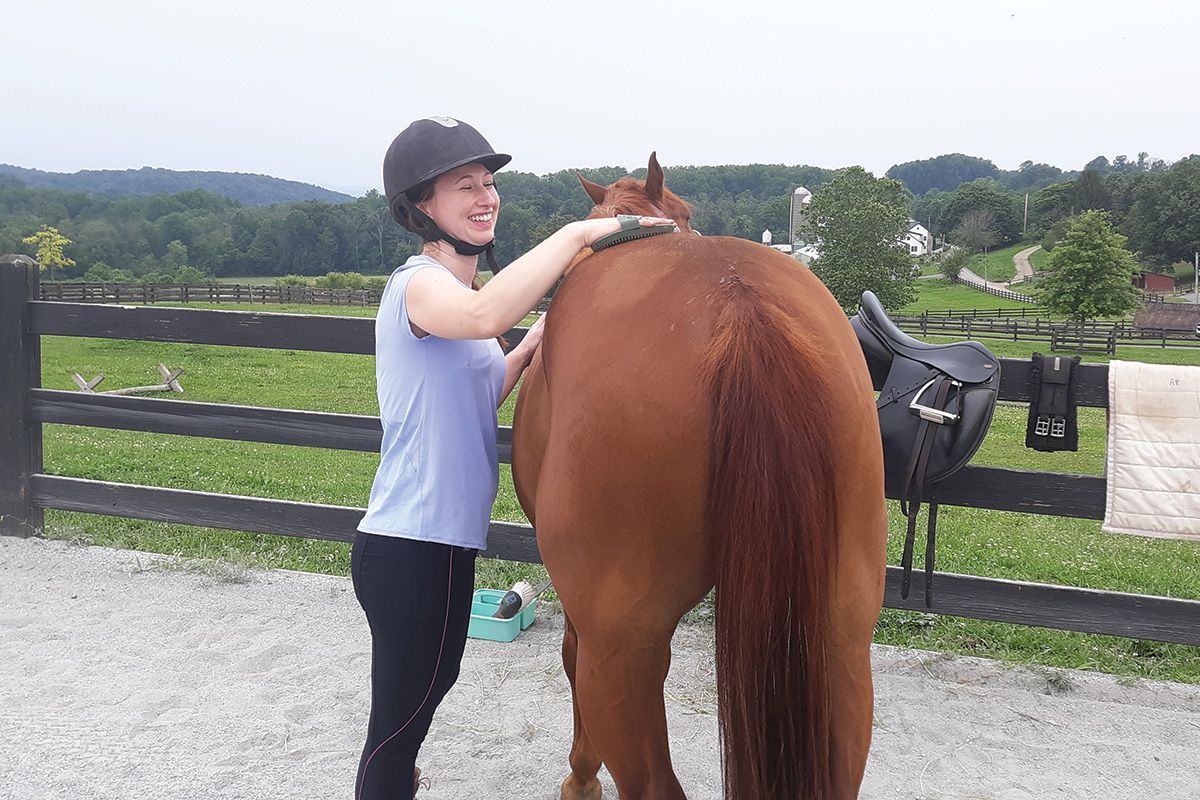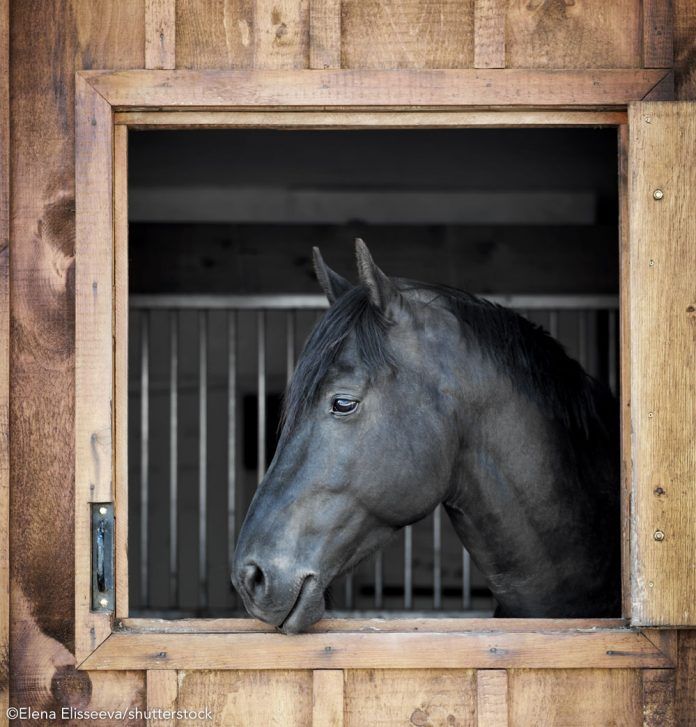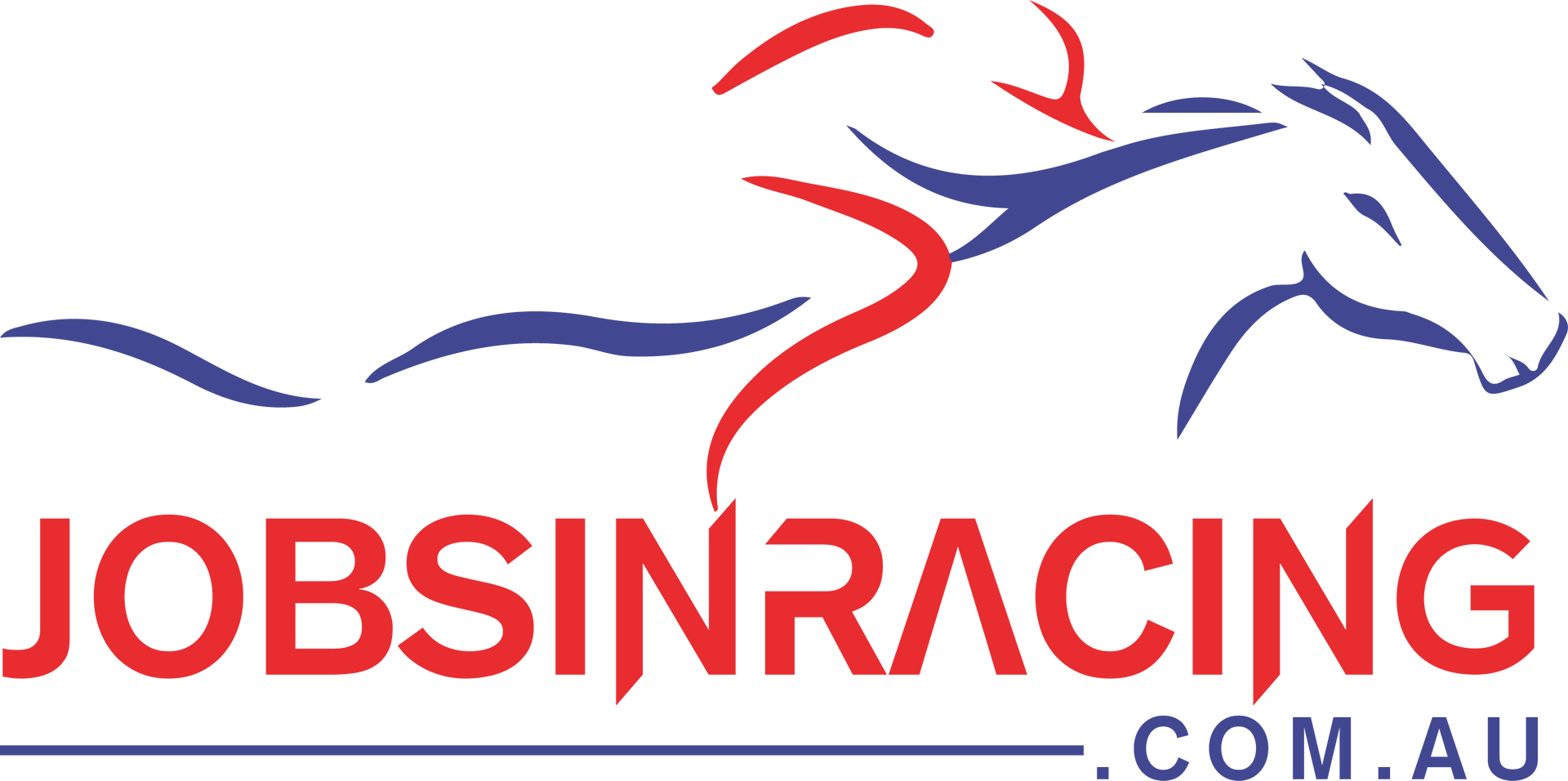Horse Grooming Tips
It’s a universal truth of horse ownership that the dirtier you get, the cleaner your horse becomes. There are no real shortcuts to a well-groomed horse, but you can optimize your results by grooming smarter. Here are some tips to get you grooming your horse like a pro.
Grooming Tips for a Shiny Coat
To get your horse shining like a superstar, regular grooming is essential. A few tips and tricks will help you get the most megawatts out of your grooming sessions.
If you’re going for the gleam, make good use of your curry comb or grooming gloves. Currying removes deep-down dirt, promotes circulation and helps distribute the natural oils in your horse’s coat. Plus, it’s like a mini-massage for your horse.
Follow with a medium-stiff brush, using short, brisk strokes with an upward flick to lift the dirt and loose hair you’ve brought up with your curry session. Finish with a soft brush to bring up the shine in your horse’s coat.
To achieve a truly healthy shine, your horse needs quality nutrition. Talk to your vet or an equine nutritionist to make sure your horse is on an optimal feeding plan. Supplements for skin and coat health can further boost glow with a blend of ingredients that usually include fats, vitamins and biotin to support hair growth and shine.
Horse Bathing Tips
Sometimes nothing will replace a proper bath when your horse has deep-down dirt in his coat. He’ll appreciate warm water if it’s available, which also opens the hair shaft to make your cleaning efforts more effective. An adjustable spray nozzle lets you dial the water pressure down for your horse’s sensitivity level as needed, and increase it for more efficient rinsing.
Diluting the shampoo in a bucket makes it easier to rinse from your horse’s coat. Some equine shampoos are concentrated and designed to be diluted before use, so read the directions on the product you are using. Quick grooming tip: work the shampoo down to your horse’s skin with grooming gloves or your fingers for a deep clean.
It’s usually not necessary to use shampoo on the face and head. You don’t want to get soap in your horse’s eyes, and it can be difficult to rinse out completely. A damp towel or sponge should be sufficient to clean your horse’s face.
For light-colored heads or white markings that need deeper cleaning, dip a sponge in diluted shampoo and follow up with a clean, damp rag to rinse.
Never use dish soap or other harsh detergents to bathe your horse. These will strip the oils from the coat and possibly irritate his sensitive skin. Equine shampoos and conditioners are formulated with a gentle pH while also being equipped to handle horses’ coarser hair coats and the tough dirt they get into.
It’s crucial to rinse well. Soap left in the coat dries it out, can cause itching and dandruff, and leaves a dull finish instead of the bright and shiny glow you want. To make sure your horse’s coat is soap-free, rinse and then use a sweat scraper to squeegee excess water from the coat. If you see soap bubbles, rinse and repeat until the water runs clear.
To repel stains from your horse’s clean coat and add extra shine, apply coat polish spray while he’s still damp. Horses don’t require a full bath that often; a rinse with plain water will usually suffice to remove dirt and sweat after a workout.
Unravel a Tangled Mane or Tail
The gentlest way to detangle is to do it by hand, although you can also use a wide-tooth plastic comb. A mane and tail detangler makes the job easier so that the strands of hair slip apart without snagging and breaking. Many coat polish spray products also double as detanglers.
Apply the product evenly through the hair. Then start detangling from the bottom of the hair, working your way up. Work in small, manageable sections. To remove burrs, foxtails and large knots, apply detangler directly to the problem areas.
Once you can easily run your fingers through the hair, you can use a brush or comb if you wish. If you opt to brush, hold the hair in one hand close to the top in order to avoid pulling on the root, and then brush below—again, working from the bottom up.
Tips for a Tidy Trim
Another key part to grooming your horse is trimming, so follow these tips.
Some light cleanup work with the clippers will take your horse’s look from shaggy to sleek. High-level competition often calls for a more stringent standard of trimming, but this isn’t necessary for most horses.
Small clippers with a No. 10 blade are sufficient for this simple trimming job. Make sure your horse will tolerate the sound and feel of the clippers before you start. You’ll be mainly clipping with the direction of the hair growth to remove just the longest hairs for a blended appearance. (Clipping against the growth gives a closer shave.) However, when trimming your horse, you may find that you need to turn the clippers and brush over the top of the hair at an angle in order to blend it.
To trim the billy-goat beard under your horse’s jaw, run the clippers underneath in the direction of the hair growth from between his jowls to the groove in front of his chin. Angle the clippers as needed to get all the hair and blend it at the edge of the jawline.
Clean up shaggy fetlocks and long, wispy hairs on the back of your horse’s legs using the clippers with the direction of the hair. Turn the clippers to scoop out all the shag underneath the fetlock joint and behind the pastern.
The hair in your horse’s ears provides protection from bugs and gnats in summer and offers warmth in winter, so it’s best to not remove too much if your horse lives out on pasture. Hold the ear in your hand, gently press the sides together and remove the long hairs that protrude beyond the edge of the ear with your clippers. This levels off the hair inside the ear with the outer edge.
Trimming a bridle path will also give your horse a neater look by removing a little mane behind the ears where the crownpiece of the bridle sits. Usually just a few inches is needed to accommodate the width of your bridle.
The whiskers on your horse’s muzzle have some sensory function, so many horse owners opt to leave these little feelers. Other horse owners prefer keep them clipped off during the show season, depending on the discipline.
Whiter Whites
Keeping your white or light-colored horse clean is a major grooming challenge, so here are tips for tackling those white hairs.
White socks and markings also require extra effort to stay sparkling. To keep stains from setting into the coat, keep up on regular grooming. Use waterless shampoos and spot removal products when bathing isn’t possible; just spray on and use a towel to lift the stain. Simple spot cleaning with a bucket and sponge works too.
A specially formulated whitening shampoo will be your best friend in the wash rack. These shampoos usually have a blue or purplish tint to counteract the yellow cast a stained white coat often takes. Read the product directions carefully so as to not leave behind a purple cast on your horse’s whites!
Source: https://www.horseillustrated.com/horse-grooming-tips


